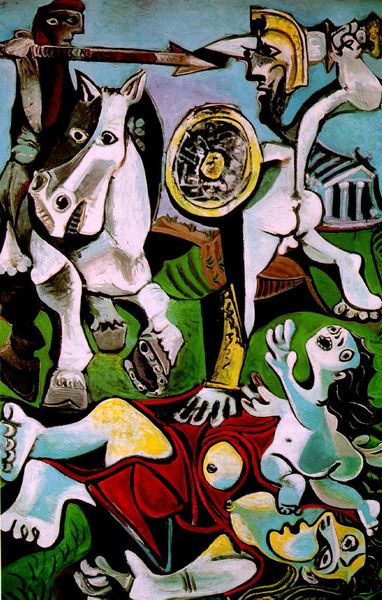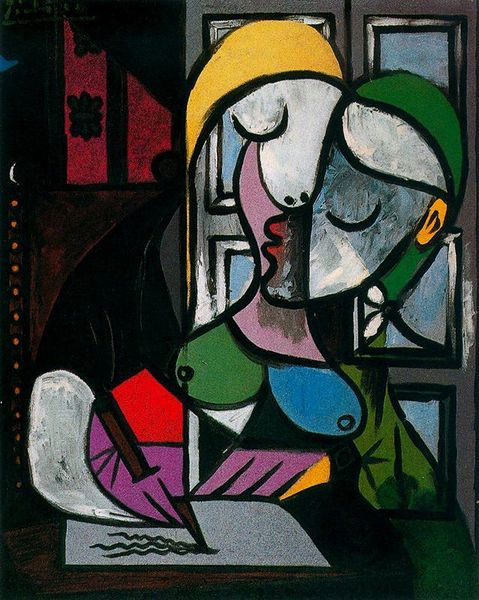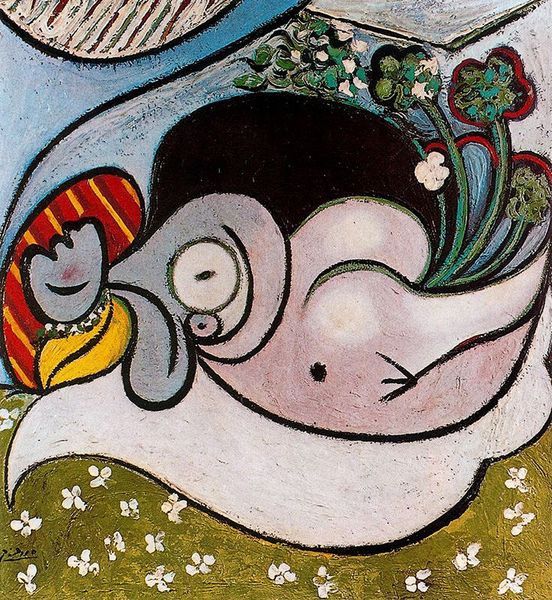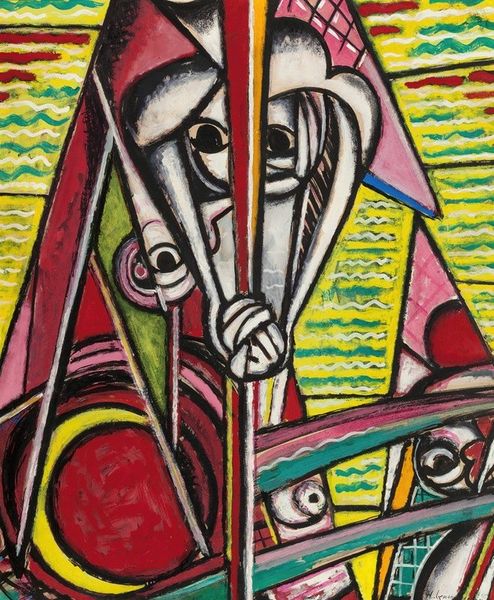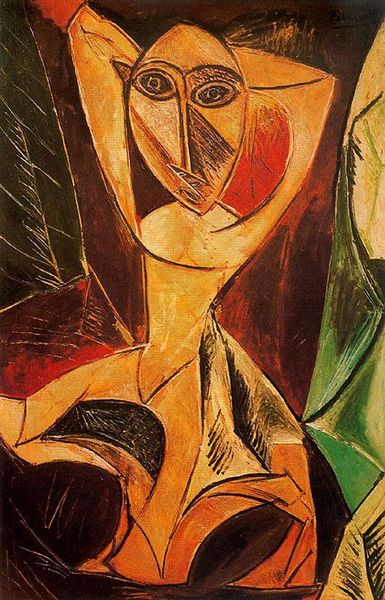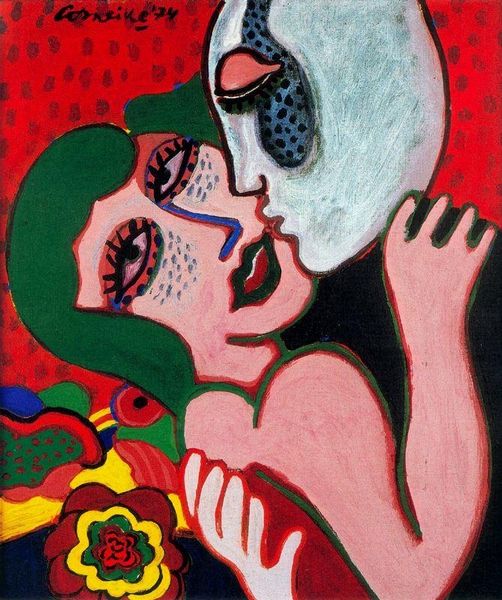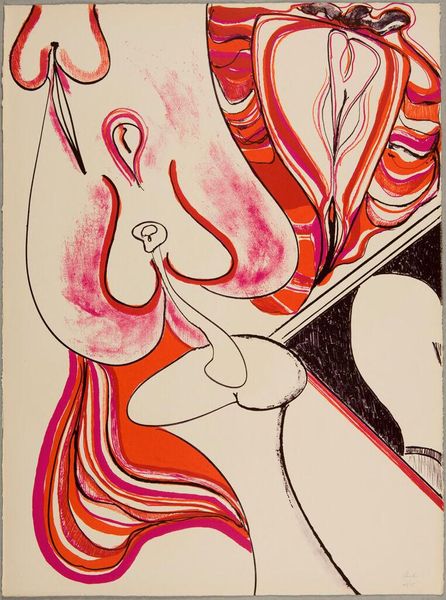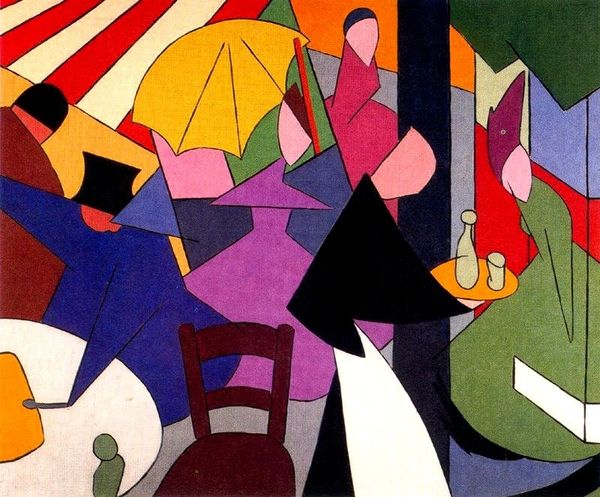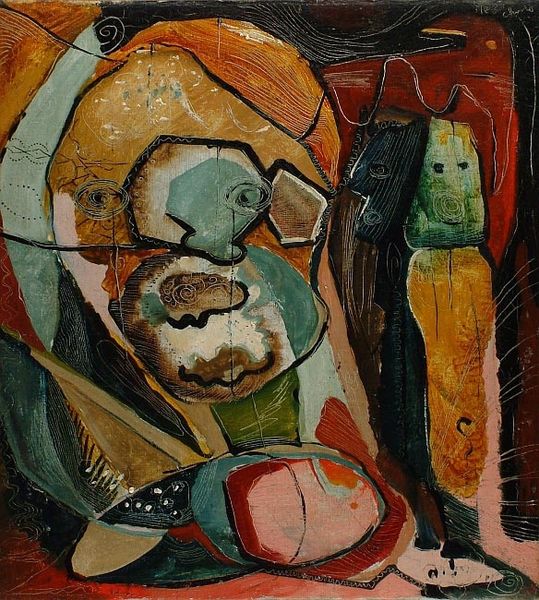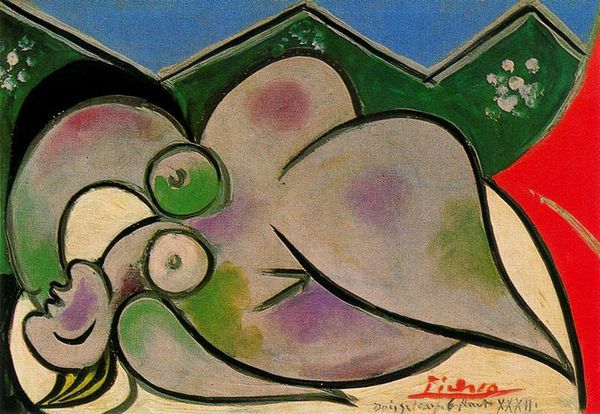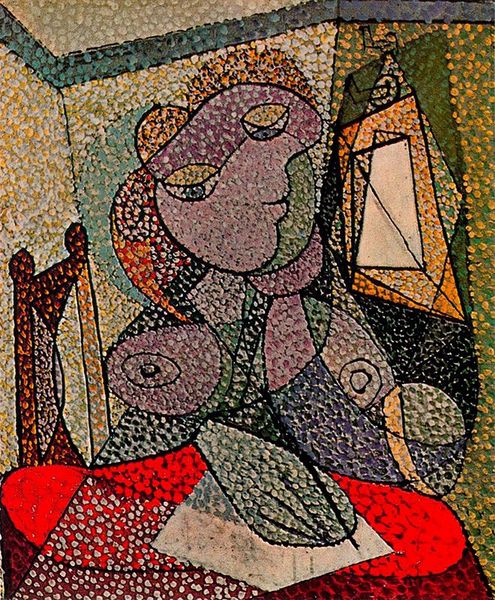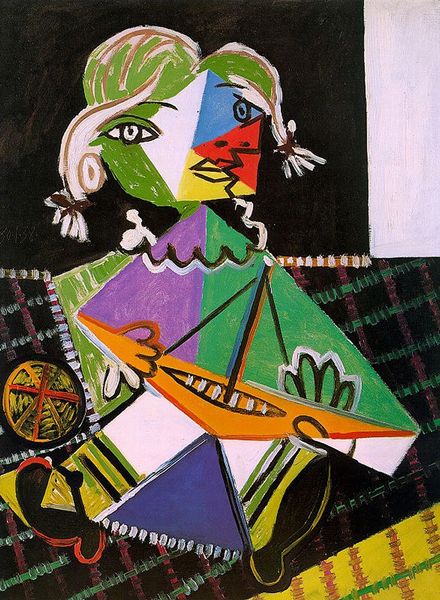
painting, oil-paint
#
cubism
#
painting
#
graffiti art
#
oil-paint
#
pop art
#
female-nude
#
nude
Copyright: Pablo Picasso,Fair Use
Curator: Right now we're looking at "The Mirror," painted by Picasso in 1932, rendered in oil. What's your first take? Editor: Disquieting, yet alluring. There's a languid, almost dreamlike quality to it, but those eyes, and that insistent, flattened plane of reflection behind, feel unsettling. Curator: It's classic Picasso—twisting perception and form to depict his lover, Marie-Thérèse Walter. This era, you see, was intensely passionate for him. The distorted features, the bold colours, almost pulsate with that intensity, don't you think? Editor: I'm curious about the actual facture. The brushstrokes are deliberate, bold, yet strangely flattened. It's as if Picasso is working against the very sensuality he’s supposedly portraying, right? Trying to assert the primacy of paint and canvas, of his *hand* as a creator. Curator: Precisely! The mirror itself acts as a fractured lens. It isn't merely reflecting her image but presenting her innermost being—that private self. It seems as though he aims to transcend representation. Editor: What intrigues me are the patterns. Those circular motifs are so decorative; so different from the figure in the mirror and from the nude sprawled out in front. I’d be keen to learn about what sorts of textiles and furnishings surrounded Picasso. It couldn’t be as romantic as it looked. The way luxury seeps into and sustains painting traditions—it is just something I can’t escape from considering. Curator: That patterned background definitely offsets the curves of her body and the mirror, emphasizing her three-dimensionality despite the Cubist style. She's both there and not there, intimate and alienating all at once. This interplay makes the artwork so haunting. Editor: Seeing the piece this way casts it in a fresh light, literally showing Picasso grappling with materiality itself: surface, subject and selfhood intertwining through material act. Curator: It reminds you that art isn’t just what we see; it’s also about feeling. Editor: Exactly, art becomes more of how things get made, by whom, under what conditions…It is an entry point to material stories and artistic practices.
Comments
No comments
Be the first to comment and join the conversation on the ultimate creative platform.

